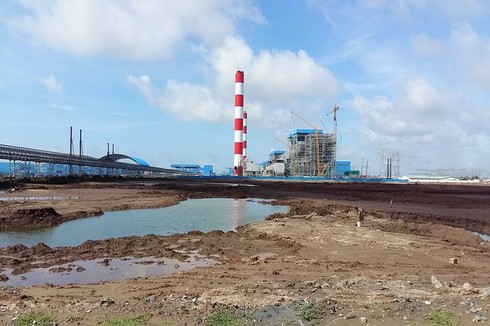Carbon emission a thorny problem
Mon, 18 Nov 2019 15:35:00 | Print | Email Share:
Vietnam has pledged to cut 8% of her greenhouse gas emissions by 2030, or even 25% with international support.

A thermal power plant in Vietnam. This sector is among those that discharge large
volumes of emissions – PHOTO: TRUNG CHANH
This represents Vietnam’s determination to honor her global commitment to anti-climate change. Still, it is tough to fulfill such a commitment in the context of budget constraints and a lack of specific policies on emissions.
Six years ago, a report published by the Working Group I of the Intergovernmental Panel on Climate Change (IPCC) considered climate change to be one of the greatest challenges to humankind. Its effects on human beings and changes to the climate system have been documented since the 1950s.
The main cause of climate change is greenhouse gas emissions, of which carbon emissions from human daily life and production activities around the world is the main culprit.
Surging cost woes
At the workshop entitled “Improvement of Policies and Legislation in Response to Climate Change in Vietnam” held in Can Tho on October 7, Prof. Tran Thuc, vice chairman of the advisory council of the National Committee on Climate Change, said coupled with development, the number of modern comforts such as cars, refrigerators and air conditioners has been on the rise. In other words, the demand for energy grows, which gives rise to more emissions of greenhouse gases. “Energy is expected to account for 83% of the total emissions by 2030,” he said. “Therefore, when it comes to cutting emissions, energy consumption reduction should be a top priority.”
Many countries around the world seek to bring down carbon emissions via taxation, Thuc said. The more emissions a unit is responsible for, the higher the tax they have to pay, he explained.
However, when a company is taxed for carbon emissions, the price of its products goes up as a result. “Who would pay for such increase other than consumers?” Thuc posed a rhetoric question.
Vietnam could tax up to US$100 per ton of carbon emissions, Thuc said, but it is necessary to consider how Vietnamese goods will compete with the same items from other countries when such tax is imposed. In the U.S., the taxation of carbon emissions leads to a rise of 11% in the price of gasoline, 134% in coal, 30% in gas, and 31% in electricity. “All of these are to be borne by consumers,” said Thuc.
Taxation aside, other countries also establish a limit on carbon emissions to lower them over time. “We should tax rationally to avoid social disturbance, but still ensure emissions reduction,” Thuc suggested, adding that the imposition of a carbon emission ceiling should be applicable first to some large-scaled enterprises.
Tran Dinh Sinh, deputy director of the Green Innovation and Development Center (GreenID), said he agreed to putting a cap on carbon emissions since waste control in Vietnam is now solely based on emission standards. “Even though some coal-fired power plants, steel or cement factories meet the emission standards, the areas where these facilities are located are always polluted,” he said.
Effective mechanism for emission reduction
Thuc noted that adaptation to climate change must take into account social security and protect people’s lives. “[At present] This is mainly funded by the state budget. It is difficult to call on the corporate circle to invest in, say, dyke and embankment development or anti-flood projects.”
As for the reduction of greenhouse gas emissions, he said, it must start with the business community. Cutting greenhouse gas emissions is the task of companies. They will therefore be obliged to do so by state regulations, mechanisms and policies.
For example, the Government’s mechanism that facilitates the purchase of solar power at a high price (Decision 11/2017/QD-CP on the mechanism to encourage the development of solar power projects in Vietnam) immediately caused capital to flow into this sector, Thuc said.
The rise in solar power investment also obviates the need to massively develop coal-fired power projects, thereby minimizing the risk of emitting pollutants that bring about the greenhouse effect.
By: Saigon Times/VOV
Source: https://english.vov.vn/society/carbon-emission-a-thorny-problem-406289.vov
---------------------------------------------
Same category News :













